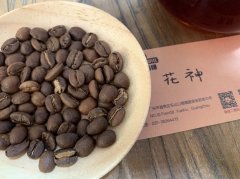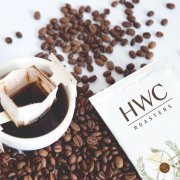Flavor characteristics of TOH washed champion beans by processing gogoguka coffee in Wulaga, Ethiopia
The Gogogu Wet Mill from deep in the Guji Forest brings incredible ripe blackberries, hot acidity and classic Ethiopian flowers such as bergamot and jasmine.
Believe it or not, high-quality coffee from the heavily forested areas of Urajavida (the highest in Ethiopia, 2310 masl above sea level) was once trucked across the border to Yegashafi, where it was sold in the form of Yejashafi coffee, because no one recognized their distinctive character.

The location of Gogogu Wate:Wate is also reminiscent of old coffee and immediately gives off an onion-like fragrance. Spring onions? Right. Oddly enough, this is my favorite single flavor attribute in Central Guji coffee.
This shows two things:
1) the coffee is very fresh
2) so fresh that in a month or so, with the change of batch conditions, the exact characteristics of green onions become the most amazing honeysuckle / orange blossom fragrance. It sounds strange, but it's the secret. In short, moving forward the outline of the cup itself is electric. Key lime. Radiant, fresh, refreshing limes. Persian lime. Cafel lime. Lemon and lime. All the limes. This is a refreshing coffee.
Now, the coffee in Guji Uraga should have its own characteristics. In the southernmost forest of the Uraga region lies the Ugo Begne Forest and the Wate Gogogu community, where Gogogu washing stations produce truly unique coffee. The wet mill is located on the plain, surrounded by small farms that supply cherries to the mill.
Managed by lifetime coffee trader Kedir Jebril (brother of Larcho Torka producer Abdi Jebril and Yabitu Koba producer Feku), Gogogu's coffee goes through a delicate process: he leaves freshly peeled seeds underwater for 60 hours, compared with an average of 48 hours at a regular washing station. The coffee is then vigorously washed in the slender passage and is also chosen as the quality. Grade 2 beans with lower density are screened from the top of the channel and taken to their own drying stations. The denser grade 1 coffee will eventually enter the soaking tank and will rest overnight to remove excess mucus from the seeds before they are sent to the drying bed. Kedir covers his parchment coffee in the mesh for the first 5-6 days to avoid cracking and direct exposure to sunlight, which can damage the integrity of coffee beans.

Qianjie photographed the TOH Champion Bean in 2020. This excellent coffee bean is from the Uraga region of Ethiopia. It is a native coffee bean and is treated with water. The front end is the acidity of citrus and the fragrance of jasmine flowers, the taste of grapefruit tea appears in the middle, and the aftertaste shows a very clear sweetness of honey.
As for what is TOH Qianjie in the back of the article will focus on your introduction.
Important Notice :
前街咖啡 FrontStreet Coffee has moved to new addredd:
FrontStreet Coffee Address: 315,Donghua East Road,GuangZhou
Tel:020 38364473
- Prev

Volcanic Environment Effects on Coffee Guatemala Volcanic Region Antigua Coffee Bean Flavor Characteristics
Fertile volcanic soils, low humidity, plenty of sunshine and cool nights characterize the region and are home to some of Guatemala's most extraordinary coffees. The valley surrounding Antigua (hence the name of the area) is surrounded by three volcanoes: Agua, Fire and Acatango. Every so often, Fuego, one of Guatemala's three active volcanoes,
- Next

How do I drink Guatemalan strained coffee? How to adjust the grinding degree of flavor brewing prescription and hanging ear coffee
Origin: Koban | Guatemala Fair Trade Certified Coffee Coffee process: reborn Water washed fresh roasted Coffee altitude: 1350-1500 m Baking introduction: medium roasting Daily fresh roasting, Direct delivery Cupping Note: mild acidity, dark chocolate, lavender, caramel, long aftertaste steps for making hanging-ear coffee: take out the coffee bag and tear it carefully along the dotted line
Related
- Detailed explanation of Jadeite planting Land in Panamanian Jadeite Manor introduction to the grading system of Jadeite competitive bidding, Red bid, Green bid and Rose Summer
- Story of Coffee planting in Brenka region of Costa Rica Stonehenge Manor anaerobic heavy honey treatment of flavor mouth
- What's on the barrel of Blue Mountain Coffee beans?
- Can American coffee also pull flowers? How to use hot American style to pull out a good-looking pattern?
- Can you make a cold extract with coffee beans? What is the right proportion for cold-extracted coffee formula?
- Indonesian PWN Gold Mandrine Coffee Origin Features Flavor How to Chong? Mandolin coffee is American.
- A brief introduction to the flavor characteristics of Brazilian yellow bourbon coffee beans
- What is the effect of different water quality on the flavor of cold-extracted coffee? What kind of water is best for brewing coffee?
- Why do you think of Rose Summer whenever you mention Panamanian coffee?
- Introduction to the characteristics of authentic blue mountain coffee bean producing areas? What is the CIB Coffee Authority in Jamaica?

